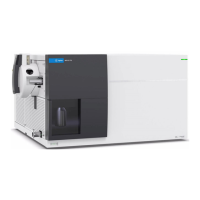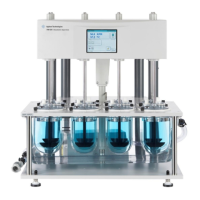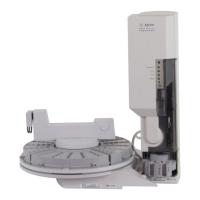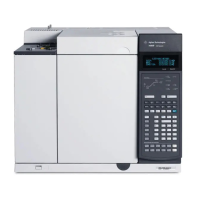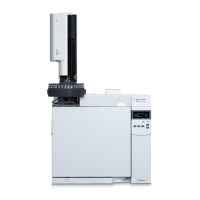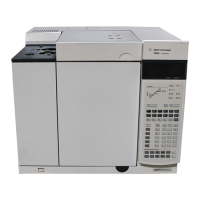38 Troubleshooting and Maintenance Manual
2 General Troubleshooting
Pressure Symptoms
This section describes unusual pressure readings and their possible causes. At
typical column flow rates (0.5 to 2.0 mL/minute), the foreline pressure will be
approximately 16 to 18 mTorr. The analyzer chamber pressure will be
approximately 1 × 10
-4
to 2 × 10
-4
Torr. These pressures can vary widely from
instrument to instrument so it is very important that you are familiar with the
pressures that are typical for your instrument at given carrier and collision
gas flows.
Foreline pressure is too high
If the pressure you observe for a given column flow has increased over time,
check the following:
• Column (carrier gas) flow is too high
• Collision cell gas flow is too high
• Air leak (usually the side plate is not pushed in or vent valve is open)
• Foreline pump oil level is low or oil is contaminated
• Foreline hose is constricted
• Foreline pump is not working correctly
Analyzer chamber pressure is too high (EI operation)
If the pressure you observe is above 2.0 × 10
-4
Torr or if the pressure you
observe for a given column flow has increased over time, check the following:
• Column (carrier gas) flow is too high
• Collision cell gas flow is too high
• Air leak
• Foreline pump is not working correctly (See “Foreline pressure is too high”
on page 38.)
• Turbo pump is not working correctly

